Ward Hayes Wilson (born April 26, 1956) is an American researcher who is the executive director of RealistRevolt, a grassroots advocacy organization in the Chicago area. He lives and works in Glenview, Illinois.
Ward Hayes Wilson is a writer at “the forefront” of debates about the value and utility of nuclear weapons and nuclear deterrence. [1] [2] [3] [4] He has been a senior fellow at the James Martin Center for Nonproliferation Studies, BASIC (the British American Security Information Council), and the Federation of American Scientists.[ citation needed ]
Wilson is best known for his argument that the atomic bombings of Hiroshima and Nagasaki did not force Japan's surrender at the end of World War II. [5] Winner of the $10,000 Doreen and Jim McElvany Nonproliferation Challenge in 2008, [6] Wilson uses realist arguments to challenge existing ideas about nuclear weapons. His arguments have appeared in anti-nuclear journals he Bulletin of the Atomic Scientists [7] and Nonproliferation Review, [8] in military journals Joint Force Quarterly [9] and Parameters, [10] in foreign policy journals Foreign Policy [11] and International Security, [12] and in the New York Times, [13] the Los Angeles Times, [14] and The Nation. [15]
Wilson received a grant in 2010 to write, travel, and speak on nuclear weapons issues. [16] He presented arguments that challenge accepted ideas about nuclear weapons in 23 countries including at the Pentagon; the French National Assembly; the United Nations; the Scottish National Parliament; the U.S. State Department; Harvard; Stanford; Princeton; Georgetown; Yale; the Sorbonne; the U.S. Naval War College; King's College London; Hamburg University; Nagasaki University; University of Pretoria; the Mexican Foreign Ministry; the Belgian Parliament; the National Assembly of Costa Rica; Aberystwyth University, Wales; and Chatham House, London [17]
Wilson launched his book Five Myths About Nuclear Weapons at an event at the United Nations in February 2013. [18] He launched his second book It Is Possible: A Future Without Nuclear Weapons at the United Nations in 2023. [19]

A nuclear weapon is an explosive device that derives its destructive force from nuclear reactions, either fission or a combination of fission and fusion reactions, producing a nuclear explosion. Both bomb types release large quantities of energy from relatively small amounts of matter.
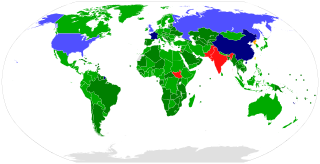
The Treaty on the Non-Proliferation of Nuclear Weapons, commonly known as the Non-Proliferation Treaty or NPT, is an international treaty whose objective is to prevent the spread of nuclear weapons and weapons technology, to promote cooperation in the peaceful uses of nuclear energy, and to further the goal of achieving nuclear disarmament and general and complete disarmament. Between 1965 and 1968, the treaty was negotiated by the Eighteen Nation Committee on Disarmament, a United Nations-sponsored organization based in Geneva, Switzerland.

Nuclear disarmament is the act of reducing or eliminating nuclear weapons. Its end state can also be a nuclear-weapons-free world, in which nuclear weapons are completely eliminated. The term denuclearization is also used to describe the process leading to complete nuclear disarmament.

In nuclear ethics and deterrence theory, no first use (NFU) refers to a type of pledge or policy wherein a nuclear power formally refrains from the use of nuclear weapons or other weapons of mass destruction (WMD) in warfare, except for as a second strike in retaliation to an attack by an enemy power using WMD. Such a pledge would allow for a unique state of affairs in which a given nuclear power can be engaged in a conflict of conventional weaponry while it formally forswears any of the strategic advantages of nuclear weapons, provided the enemy power does not possess or utilize any such weapons of their own. The concept is primarily invoked in reference to nuclear mutually assured destruction but has also been applied to chemical and biological warfare, as is the case of the official WMD policy of India.
Arms control is a term for international restrictions upon the development, production, stockpiling, proliferation and usage of small arms, conventional weapons, and weapons of mass destruction. Historically, arms control may apply to melee weapons before the invention of firearm. Arms control is typically exercised through the use of diplomacy which seeks to impose such limitations upon consenting participants through international treaties and agreements, although it may also comprise efforts by a nation or group of nations to enforce limitations upon a non-consenting country.

A weapon of mass destruction (WMD) is a biological, chemical, radiological, nuclear, or any other weapon that can kill or significantly harm many people or cause great damage to artificial structures, natural structures, or the biosphere. The scope and usage of the term has evolved and been disputed, often signifying more politically than technically. Originally coined in reference to aerial bombing with chemical explosives during World War II, it has later come to refer to large-scale weaponry of warfare-related technologies, such as biological, chemical, radiological, or nuclear warfare.

The United States is known to have possessed three types of weapons of mass destruction: nuclear, chemical, and biological weapons. The U.S. is the only country to have used nuclear weapons on another country, when it detonated two atomic bombs over two Japanese cities of Hiroshima and Nagasaki during World War II. It had secretly developed the earliest form of the atomic weapon during the 1940s under the title "Manhattan Project". The United States pioneered the development of both the nuclear fission and hydrogen bombs. It was the world's first and only nuclear power for four years, from 1945 until 1949, when the Soviet Union produced its own nuclear weapon. The United States has the second-largest number of nuclear weapons in the world, after the Russian Federation.
Robert L. Gallucci is an American academic and diplomat, who formerly worked as president of the John D. and Catherine T. MacArthur Foundation. He previously served as dean of the Edmund A. Walsh School of Foreign Service at Georgetown University, from 1996 to June 2009. Prior to his appointment in 1996, for over two decades he had served in various governmental and international agencies, including the Department of State and the United Nations.
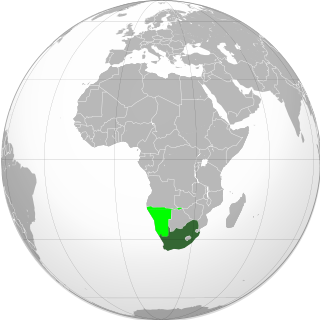
From the 1960s to the 1990s, South Africa pursued research into weapons of mass destruction, including nuclear, biological, and chemical weapons under the apartheid government. South Africa’s nuclear weapons doctrine was designed for political leverage rather than actual battlefield use, specifically to induce the United States of America to intervene in any regional conflicts between South Africa and the Soviet Union or its proxies. To achieve a minimum credible deterrence, a total of six nuclear weapons were covertly assembled by the late 1980s.
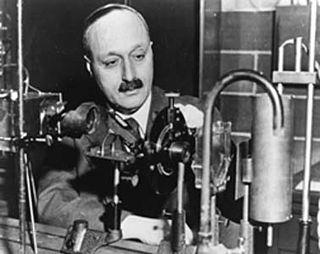
The Franck Report of June 1945 was a document signed by several prominent nuclear physicists recommending that the United States not use the atomic bomb as a weapon to prompt the surrender of Japan in World War II.
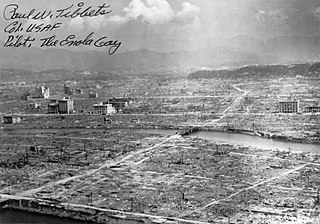
The nuclear weapons debate refers to the controversies surrounding the threat, use and stockpiling of nuclear weapons. Even before the first nuclear weapons had been developed, scientists involved with the Manhattan Project were divided over the use of the weapon. The only time nuclear weapons have been used in warfare was during the final stages of World War II when USAAF B-29 Superfortress bombers dropped atomic bombs on the Japanese cities of Hiroshima and Nagasaki in early August 1945. The role of the bombings in Japan's surrender and the U.S.'s ethical justification for them have been the subject of scholarly and popular debate for decades.
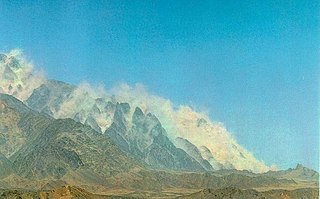
Chagai-I is the code name of five simultaneous underground nuclear tests conducted by Pakistan at 15:15 hrs PKT on 28 May 1998. The tests were performed at Ras Koh Hills in the Chagai District of Balochistan Province.
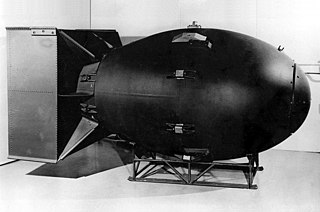
A strategic nuclear weapon (SNW) refers to a nuclear weapon that is designed to be used on targets often in settled territory far from the battlefield as part of a strategic plan, such as military bases, military command centers, arms industries, transportation, economic, and energy infrastructure, and countervalue targets such areas such as cities and towns. It is in contrast to a tactical nuclear weapon, which is designed for use in battle as part of an attack with and often near friendly conventional forces, possibly on contested friendly territory.
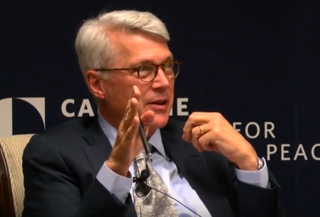
Scott Douglas Sagan is the Caroline S.G. Munro Professor of Political Science at Stanford University and co-director of Stanford's Center for International Security and Cooperation (CISAC). He is known for his research on nuclear weapons policy and nuclear disarmament, including discussions of system accidents, and has published widely on these subjects.

Substantial debate exists over the ethical, legal, and military aspects of the atomic bombings of Hiroshima and Nagasaki on 6 August and 9 August 1945 at the close of World War II (1939–45).
The Army Strategic Forces Command is a strategic and missile formation of the Pakistan Army. Headquartered at the Joint Staff HQ in Chaklala near Rawalpindi, the strategic command controls the land-based ballistics and cruise missile systems—both nuclear and conventional.

The "nuclear umbrella" is a guarantee by a nuclear weapons state to defend a non-nuclear allied state. The context is usually the security alliances of the United States with Australia, Japan, South Korea, the North Atlantic Treaty Organization and the Compact of Free Association. Those alliances were formed because of the Cold War and the Soviet Union. For some countries, it was an alternative to acquiring nuclear weapons themselves; other alternatives include regional nuclear-weapon-free zones or nuclear sharing.
The Humanitarian Initiative is a group of states that evolved within the framework of the Nuclear Non-Proliferation Treaty (NPT) and nuclear weapons diplomacy more widely. 159 states subscribed to the last iteration of the initiative's Joint Statement in 2015. Since 2013, it led to a series of conferences exploring the Humanitarian Impact of Nuclear Weapons, culminating in the Humanitarian Pledge, issued by the Austrian Government, to "fill the legal gap for the prohibition and elimination of nuclear weapons". The Pledge has been endorsed by 108 governments as of 1 June 2015. The Humanitarian Initiative is seen as a direct answer to the lack of progress in nuclear disarmament.

The 2017 Nobel Peace Prize was awarded to the International Campaign to Abolish Nuclear Weapons (ICAN) "for its work to draw attention to the catastrophic humanitarian consequences of any use of nuclear weapons and for its ground-breaking efforts to achieve a treaty-based prohibition on such weapons," according to the Norwegian Nobel Committee announcement on October 6, 2017. The award announcement acknowledged the fact that "the world's nine nuclear-armed powers and their allies" neither signed nor supported the treaty-based prohibition known as the Treaty on the Prohibition of Nuclear Weapons or nuclear ban treaty, yet in an interview Committee Chair Berit Reiss-Andersen told reporters that the award was intended to give "encouragement to all players in the field" to disarm. The award was hailed by civil society as well as governmental and intergovernmental representatives who support the nuclear ban treaty, but drew criticism from those opposed. At the Nobel Peace Prize award ceremony held in Oslo City Hall on December 10, 2017, Setsuko Thurlow, an 85-year-old woman who survived the 1945 atomic bombing of Hiroshima, and ICAN Executive Director Beatrice Fihn jointly received a medal and diploma of the award on behalf of ICAN and delivered the Nobel lecture.

Beatrice Fihn is a Swedish lawyer. She was the executive director of the International Campaign to Abolish Nuclear Weapons (ICAN) from 2014 to 1 February 2023.
{{cite web}}: CS1 maint: numeric names: authors list (link)